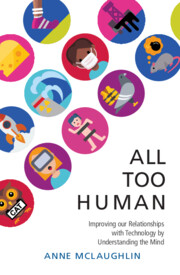Book contents
- All Too Human
- All Too Human
- Copyright page
- Contents
- Figures
- Tables
- Preface
- Acknowledgments
- Introduction
- 1 “Brace for Impact”
- 2 Bad Water
- 3 Hybrid Vigor
- 4 A Mind Divided
- 5 All the Light We Cannot See
- 6 Mistakes
- 7 History Repeating?
- 8 Needles in Haystacks
- 9 Apt Pupils and Alien Invaders
- 10 A Relative to Truth
- 11 Old Principles for New Worlds
- Conclusion
- Notes
- References
- Index
3 - Hybrid Vigor
Published online by Cambridge University Press: 27 January 2022
- All Too Human
- All Too Human
- Copyright page
- Contents
- Figures
- Tables
- Preface
- Acknowledgments
- Introduction
- 1 “Brace for Impact”
- 2 Bad Water
- 3 Hybrid Vigor
- 4 A Mind Divided
- 5 All the Light We Cannot See
- 6 Mistakes
- 7 History Repeating?
- 8 Needles in Haystacks
- 9 Apt Pupils and Alien Invaders
- 10 A Relative to Truth
- 11 Old Principles for New Worlds
- Conclusion
- Notes
- References
- Index
Summary
This is a chapter on flexible thinking - what helps us be creative, what hurts our creativity, and what technology can do to support creativity or help us recognize when we’re stuck in a rut. The stories in this chapter include the outside-the-box thinking that saved the astronauts of Apollo 13, the detrimental impact of alarm overload in hospitals, and a short test of creativity the reader can take. The title, hybrid vigor, is an analogy of how creativity comes from unlikely bedfellows. This can mean bringing together different ideas, different people, or different functions for everyday items. I cover the research on how diverse teams are more creative and successful and why. This transitions into how our emotions affect our decisions and our creativity so that we know what to look out for (the best example is that judges hand down harsher sentences just before lunch). We can’t and shouldn’t remove emotions from decision-making, but we can design technology that helps us remove detrimental emotions such as frustration, anger, and impatience.
- Type
- Chapter
- Information
- All Too HumanUnderstanding and Improving our Relationships with Technology, pp. 29 - 41Publisher: Cambridge University PressPrint publication year: 2022

